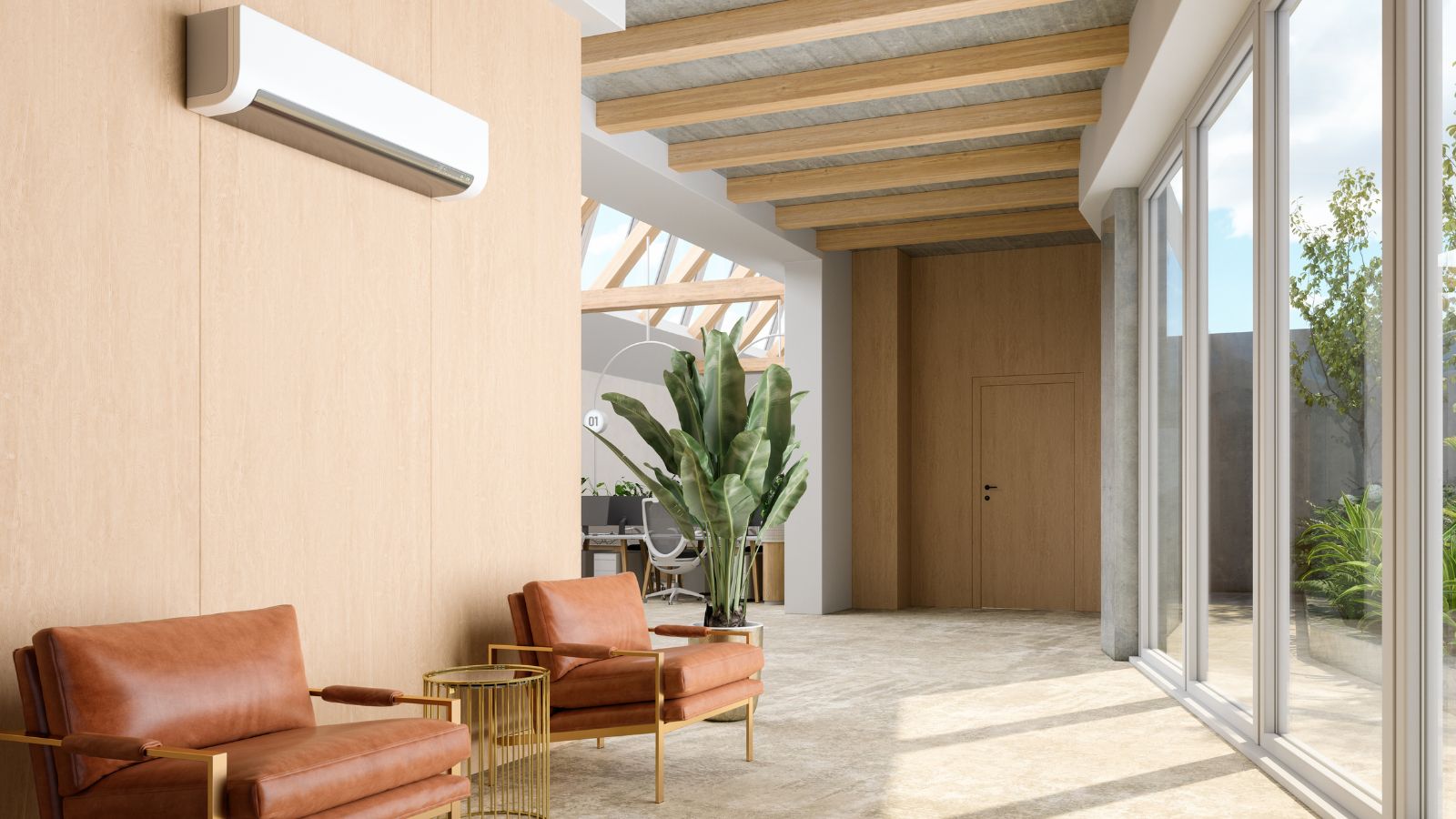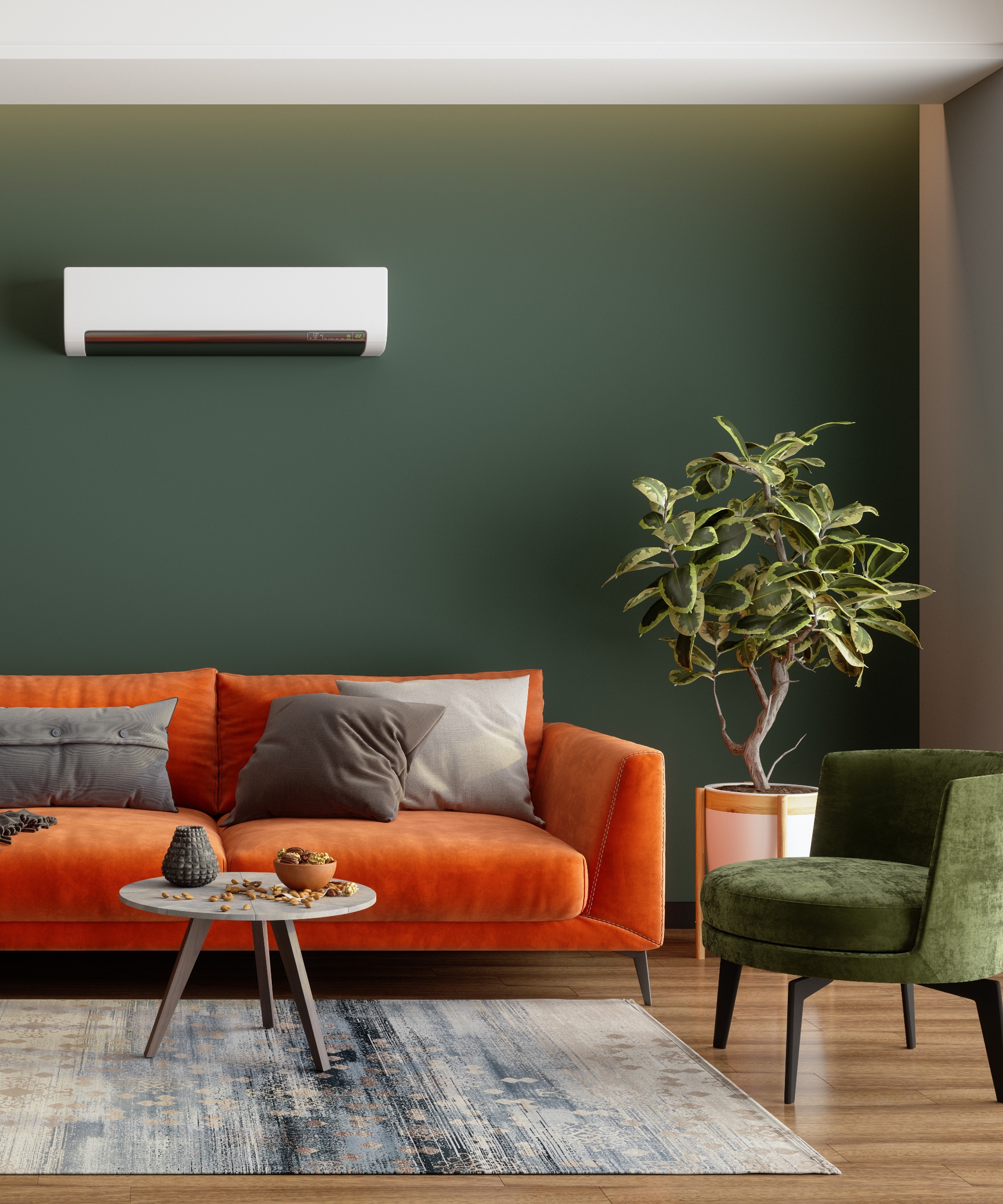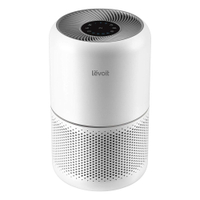How to turn off your AC's fresh air intake – step-by-step from HVAC professionals
With outdoor air quality dropping, HVAC experts explain how to set your AC to recirculate – and why you might want to make the change


Air conditioners are brilliant for refreshing the air in our homes, improving ventilation, and keeping us cool, but how do you turn off fresh air intake when the air outside isn't so fresh?
Although there are several different air conditioning types, the process of turning off the fresh air intake is usually very similar and helps to keep outside air pollutants out and keep healthy, clean air in.
Here, HVAC experts explain how to turn fresh air intake off on an air conditioner, and why it is important in low air quality.
How to turn fresh air intake off on an AC
Although we often question if you should run AC when air quality is bad, so long as you set the machine to recycle your home's existing air, rather than pull new air in from outside, it can be a great way to purify the air in your home without an air purifier.
Here’s how to do just that.

1. Determine how your AC brings in fresh air
Air conditioners vary widely in their makes and models, and each can draw fresh air into your home slightly differently. As a result, it is important to work out which mechanism your AC uses by consulting the manufacturer's instructions, says Rhett Jones, HVAC expert at Air Force Heating and Air.
‘Most of the time, fresh air in an air conditioning system is mechanically introduced to the system by either a fresh air damper, and Heat Recovery Ventilator (HRV), an Energy Recovery Ventilator (ERV), or a dehumidifier with a fresh air intake,’ he explains. ‘If it is one of these, then there will be a control either on the mechanical device or a thermostat on the wall (which could be the main thermostat control for the house).
In some cases, however, a duct is installed directly into the HVAC from outside, which would always introduce fresh air, Rhett adds. ‘In that instance, a damper would need to be installed by a professional to help the homeowner cap it off completely.’
2. Either alter the system settings or close dampeners
Once you have worked out which intake option your AC uses, then you can work on switching the intake off and altering the settings to recirculate.
If your AC unit functions through a control panel or thermostat, then you can enter the settings on this and look for the options listed as either "Fresh Air" or "Outside Air" and another for "Recirculate" or "Inside Air", says Christopher Coleman, of HVAC specialists DH Life Labs. ‘The exact terms might vary based on the manufacturer and model of your AC. Check your user manual if you're unsure,’ he adds.
If you have a ducted AC unit, however, you will need to close the dampeners – if your unit already has them, continues Lane Dixon, VP of operations and HVAC expert at Aire Serv. ‘The owner's manual from the system manufacturer should tell you how the intake vents work, and it is important to follow the exact instructions for your make and model to prevent damaging anything in the unit,’ Lane warns.

Lane is the VP of operations at Aire Serv, a Tennessee heating and air conditioning specialist. They specialize in installation, maintenance, and repair, and have become one of the nation's most trusted brands for air conditioning.
3. Optional – combine with an air purifier to keep indoor air clean
Often, we will be changing our ACs to recirculate when the outside air quality is less than ideal, but it is worth noting that AC filters alone will not be enough to clean the air in our home of these pollutants. It is, therefore, a good idea to use a recirculating AC in conjunction with one of the best air purifiers, says Christopher Coleman, of DH LifeLabs.
‘Most systems are not designed to filter out fine particles like PM2.5 from wildfires, such as those we are seeing across the US and Canada at the moment,' Chris explains. ‘For this reason, combining this action with other steps such as using an air purifier that can capture particles upwards of 0.03 microns, can further improve your indoor air quality.’
LEVOIT Air Purifier for Home | $149.99 at Amazon
Sleek and smart, the Levoit air purifier can help with pet hair, dust, odors, and pollen, making the air in your space feel fresh and clean. It was also named one of our best air purifiers
When to turn off fresh air intake

Although introducing fresh air into your home is important for ventilation, the keyword is ‘fresh’ air. In times of climate disasters such as wildfire smoke, high levels of pollution or pollen, or dust storms, it is important to prevent contaminated air entering your home, explains Chis Coleman, of DH LifeLabs.
It is only when the outside air is safe and clear that you should be introducing it into your space, as this is healthier than recirculating old air already in your property, adds HVAC expert Rhett Jones. ‘With many homeowners working from home and spending more time at home with streaming, meal deliveries, etc. I believe home air quality is more important than ever,’ he says.
'Nevertheless, when the outside air is nearing danger of being breathed, it is fine to switch to just the fan on function. This just spins the indoor fan continuously allowing air to circulate through the house to help with humidity and to make us feel cooler (much like a ceiling fan) without introducing airborne irritants.’
FAQs
Does an AC need fresh air intake?
Air conditioners, despite having a fresh air intake option, do not need fresh air to function and keep you cool. Using the intake function allows you to improve your home's air quality and ventilation when the outside air is relatively clean as they contain a filter to catch any pollen or dust, so it is best left on in normal circumstances. That being said, however, when pollution is high, you can safely turn this feature off to keep your home and your lungs clean.
What happens if you block an AC intake?
Blocking an AC intake will cause your machine to work harder to draw air in, and possibly make the machine overheat, resulting in damage and high energy bills as the machine consumes more energy trying to pull in air. When trying to intentionally stop fresh air intake to an AC unit, you should instead work through your machine's settings, or use dedicated dampeners to prevent damaging your AC unit and prevent outside air from being drawn in.
Between turning the fresh air intake off on your AC, and cleaning your air conditioning unit and its filters, you can continue to use your machine to filter and cool your air even when the outside air quality has been compromised.
Sign up to the Homes & Gardens newsletter
Design expertise in your inbox – from inspiring decorating ideas and beautiful celebrity homes to practical gardening advice and shopping round-ups.

Chiana has been at Homes & Gardens for two years and is our resident 'queen' of non-toxic living. She spends most of her time producing content for the Solved section of the website, helping readers get the most out of their homes through clever decluttering, cleaning, and tidying tips. She was named one of Fixr's top home improvement journalists in 2024.
-
 How to clean a patio – 6 different methods, and when you must use a chemical cleaning agent
How to clean a patio – 6 different methods, and when you must use a chemical cleaning agentFrom manual scrubbing, natural solutions or calling in the pros, industry experts reveal the benefits and considerations of each method
By Andy van Terheyden Published
-
 Kris Jenner's favorite air fryer, the Ninja Crispi, is the perfect small kitchen solution – it deserves a place on the most compact of countertops
Kris Jenner's favorite air fryer, the Ninja Crispi, is the perfect small kitchen solution – it deserves a place on the most compact of countertopsKris approves of this compact yet powerful air fryer, and so do our own kitchen appliance experts, praising it for its multifunctionality
By Hannah Ziegler Published
